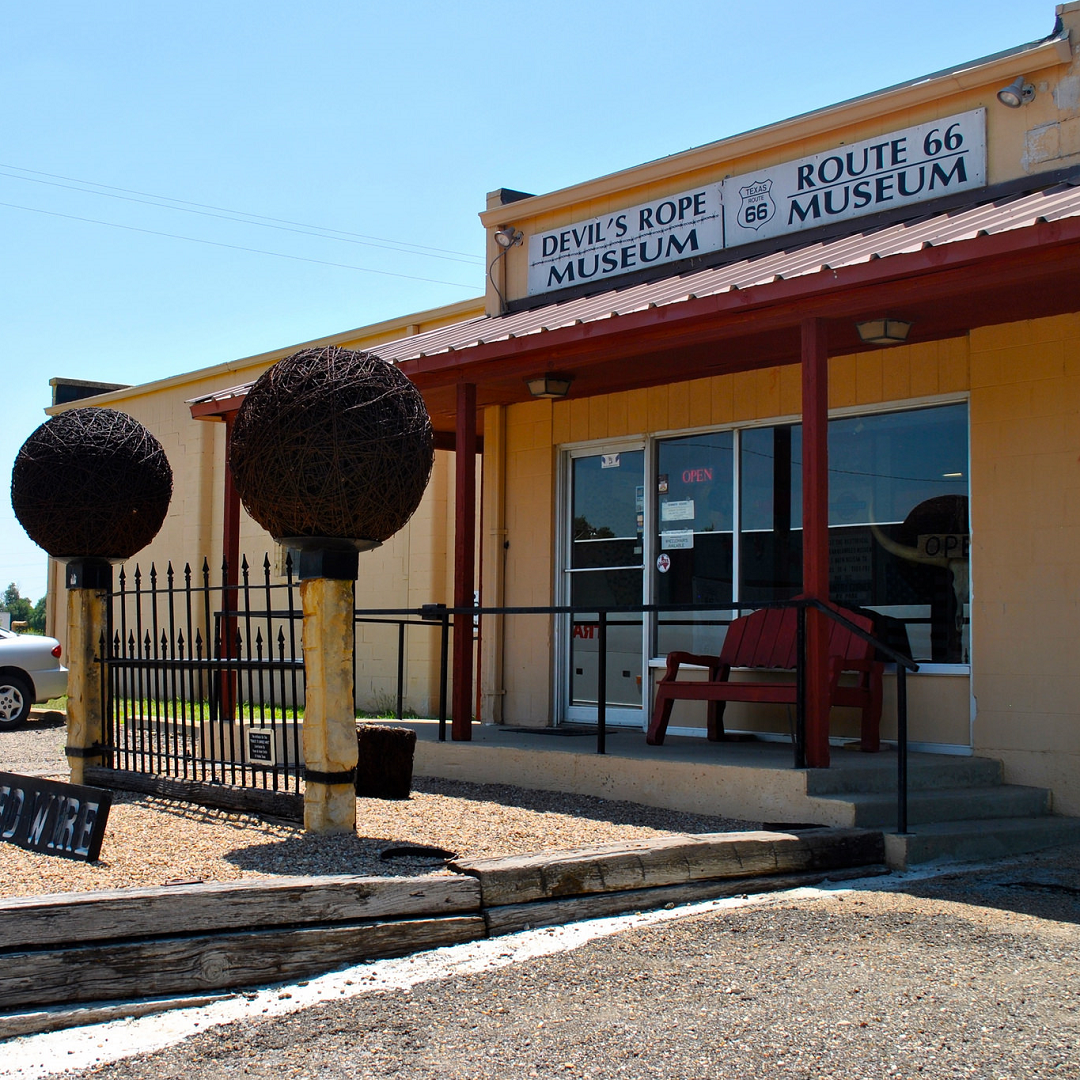McLean, Texas: A Perfectly Preserved Route 66 Town
The town of McLean, Texas was donated in 1901 by Alfred Rowe, an English rancher who traveled to and from Europe until his fateful trip on the Titanic. When Route 66 arrived in McLean in 1927, the 22 auto-related businesses and gas stations were the primary industry that drove the local economy.
McLean was also known as “Uplift City” after the local bra factory, where women earned $1 for an eight-hour shift. Danny Douglas, who grew up in McLean, says “Many of us had small, fancy bras hanging from our car mirrors—given to us by local girlfriends who worked in the factory. I still have mine.”
In its heyday, McLean had tourist cabins, car dealerships, motels, movie theaters, and restaurants—today most are gone. As Amarillo became popular, McLean struggled to stay relevant. Once Route 66 bypassed the town in 1982-1984, the nail was in the coffin. Ironically, it is this isolation and lack of activity that has preserved the town as one of the more popular stops on Route 66. McLean stands today like a perfectly aged film set and something out of a time capsule.

Sights in McLean, Texas
To cruise the Historic District, drive Route 66 (1st St.) through Main, 2nd, and Gray Streets. While in town, be sure to check out the 1929 Phillips Petroleum (219 Gray St.), a quaint cottage-style Tudor Revival building with a red roof, rounded orange gas pumps, and an exterior brick chimney. This was the first Phillips Petroleum filling station that opened in Texas, and it was in business for more than 50 years.
Devil’s Rope Museum and Old Route 66 Museum
In the late 1800s, before settlers arrived, the West was all “open range.” Millions of bison, cattle, and horses freely roamed the grasslands eating everything in their path; there were so many of them that they blackened the plains. The animals trampled and destroyed crops; regular fencing couldn’t corral them. So, in the 1870s fencing was a hot topic.
The Land Office at the U.S. Department of Agriculture feared it would be impossible to settle the West because there was no practical solution to controlling the cattle and bison. That was…until the invention of barbed wire. Michael Kelly came up with the basic design, and then Joseph Glidden improved on it by locking the signature sharp metal barbs in place. The invention, referred to as the “Devil’s Rope,” proved so popular that by 1876, nearly three million pounds of barbed wire were being sold annually.
The new barbed wire helped farmers maintain control over their property, but the ranchers were furious. As a result, a series of battles broke out resulting in “fence-cutting wars.” It was an all-out brawl, but bison paid the ultimate price. Their numbers were already being decimated by hunters, but barbed wire played a critical role by blocking access to water and food.
The Devil’s Rope Museum (100 Kingsley St., 806/779-2225, 9am-5pm Mon.-Fri., 10am-4pm Sat. Apr.-Oct., free) has the largest collection of barbed wire with 450 different types and more than 2,000 samples and a gallery of artworks made from the “Devil’s Rope.”
Right next door, the Old Route 66 Museum (100 Kingsley St., 806/779-2225, 10am-4pm Tues.-Sat. Mar.-Dec., free) housed in a former bra factory, has a modest collection of artifacts donated from Texas Route 66 businesses including road signs, advertising souvenirs, and a huge snake from the famed but now-closed Reptile Ranch. The gift shop also sells little fragments of pavement from the Mother Road.

McLean Alanreed Museum
During World War II, there was a prisoner-of-war camp right outside McLean. The McLean Alanreed Museum (116 N. Main St., 806/779-2731, 9am-5pm Mon.-Fri., free), located downtown, has a POW display, pioneer costumes, farming equipment, vet supplies, a fire truck, and a vintage barber shop. To visit the area of the POW camp, take I-40 east of town to Exit 146. There is a historical marker about one mile north on McCarty Street (County Line Rd.).
Where to Stay and Eat
The Cactus Inn (101 Pine St., 806/779-2346, $45-55) is a good value with basic accommodations and a friendly staff in a convenient location. Built in 1956, the inn has a great big emerald green and yellow cactus sign. The Red River Steak House is right next door.
The hand-cut rib eye at Red River Steak House (101 W. Hwy. 66, 806/779-8940, 11am-9pm Tues.-Sat., $8-22) is big—just like everything else in Texas—juicy and tender. Pescatarians can opt for the hand-breaded catfish, which is full of flavor. (The restaurant is located in the building where the old Reptile Ranch used to be.)
Back on Route 66
Head west from McLean following 1st Street and cross Highway 273. After about 1 mile, turn left (south) on County Road 26 and follow the road as it curves east (left). Take the next right (south) to cross under I-40 and then curve right (west) to take the South Frontage Road. In 6 miles, you’ll reach the town of Alanreed.
Soon after Alanreed, the pre-1930s alignment turns into a dirt road that leads to Jericho Gap, an area notorious for stranding motorists in the mud. Back when this dirt road was the only option, people were often forced to stay in private homes waiting to be towed out.
From Alanreed, you’ll follow to the post-1930s alignment instead. Turn right (north) on Main Street and take I-40 West to Exit 124. Turn left (south) and drive under the freeway, then take the first right (west) to follow the South Frontage Road for 3.5 miles. At the next I-40 exit (Exit 121), take a quick left to continue following the South Frontage Road for 6 miles into Groom.